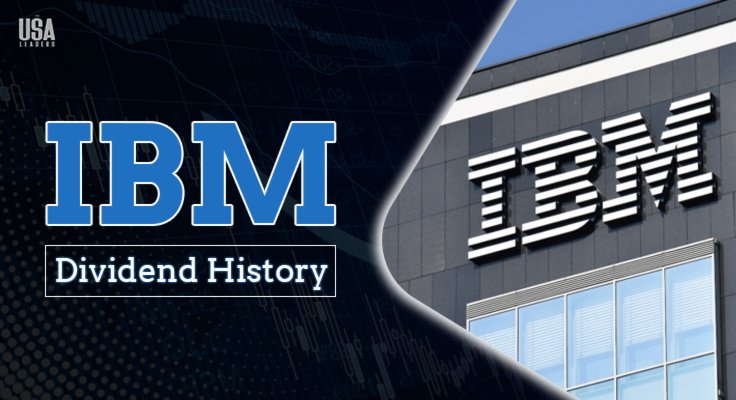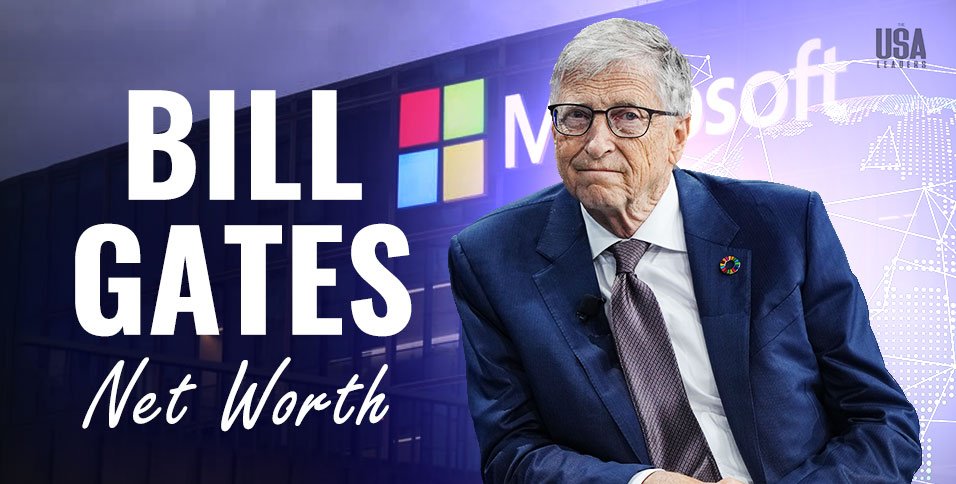Why does IBM dividend history matter to investors?
Investing in dividend-paying stocks is a powerful strategy for building long-term wealth. And, dividend history often provides invaluable insights into the financial health and future prospects of a company. For long-term investors, dividends can be a reliable source of income and a key indicator of how a company allocates its profits.
Since the early 2000s, IBM’s dividend history shows a clear pattern of consistency, if not aggressive growth. The company has steadily increased its dividend payouts, even during economic downturns and periods of internal restructuring. But how much do you really know about this tech giant’s dividend history?
In this blog, we dug deep into the numbers to uncover 12 surprising facts that might change how you view IBM’s stock.
- IBM has Paid Dividends for Over 100 Years
IBM dividend history shows that the company has been paying dividends consistently since 1916. What’s even more impressive is that IBM hasn’t missed a dividend payment in over 30 years, even during economic downturns such as the dot-com crash and the 2008 financial crisis.
IBM Dividend Overview
- Ex-Dividend Date: 08/09/2024
- Dividend Yield: 2.86%
- Annual Dividend: $6.68
- P/E Ratio: 28.69
IBM Dividend History
| Ex-Dividend Date | Type | Cash Amount | Declaration Date | Record Date | Payment Date |
| 08/09/2024 | Cash | $1.67 | 07/29/2024 | 08/09/2024 | 09/10/2024 |
| 05/09/2024 | Cash | $1.67 | 04/30/2024 | 05/10/2024 | 06/10/2024 |
| 02/08/2024 | Cash | $1.66 | 01/30/2024 | 02/09/2024 | 03/09/2024 |
| 11/09/2023 | Cash | $1.66 | 10/30/2023 | 11/10/2023 | 12/09/2023 |
| 08/09/2023 | Cash | $1.66 | 07/24/2023 | 08/10/2023 | 09/09/2023 |
| 05/09/2023 | Cash | $1.66 | 04/25/2023 | 05/10/2023 | 06/10/2023 |
| 02/09/2023 | Cash | $1.65 | 01/31/2023 | 02/10/2023 | 03/10/2023 |
| 11/09/2022 | Cash | $1.65 | 10/25/2022 | 11/10/2022 | 12/10/2022 |
| 08/09/2022 | Cash | $1.65 | 07/25/2022 | 08/10/2022 | 09/10/2022 |
| 05/09/2022 | Cash | $1.65 | 04/26/2022 | 05/10/2022 | 06/10/2022 |
| 02/10/2022 | Cash | $1.64 | 02/01/2022 | 02/11/2022 | 03/10/2022 |
| 11/09/2021 | Cash | $1.64 | 10/26/2021 | 11/10/2021 | 12/10/2021 |
| 08/09/2021 | Cash | $1.64 | 07/27/2021 | 08/10/2021 | 09/10/2021 |
| 05/07/2021 | Cash | $1.64 | 04/27/2021 | 05/10/2021 | 06/10/2021 |
| 02/09/2021 | Cash | $1.63 | 01/26/2021 | 02/10/2021 | 03/10/2021 |
| 11/09/2020 | Cash | $1.63 | 10/27/2020 | 11/10/2020 | 12/10/2020 |
| 08/07/2020 | Cash | $1.63 | 07/28/2020 | 08/10/2020 | 09/10/2020 |
| 05/07/2020 | Cash | $1.63 | 04/28/2020 | 05/08/2020 | 06/10/2020 |
| 02/07/2020 | Cash | $1.62 | 01/28/2020 | 02/10/2020 | 03/10/2020 |
| 11/07/2019 | Cash | $1.62 | 10/29/2019 | 11/08/2019 | 12/10/2019 |
| 08/08/2019 | Cash | $1.62 | 07/30/2019 | 08/09/2019 | 09/10/2019 |
| 05/09/2019 | Cash | $1.62 | 05/01/2019 | 05/10/2019 | 06/10/2019 |
| 02/07/2019 | Cash | $1.57 | 01/30/2019 | 02/08/2019 | 03/09/2019 |
| 11/08/2018 | Cash | $1.57 | 10/31/2018 | 11/09/2018 | 12/10/2018 |
| 08/09/2018 | Cash | $1.57 | 08/01/2018 | 08/10/2018 | 09/10/2018 |
| 05/09/2018 | Cash | $1.57 | 04/24/2018 | 05/10/2018 | 06/09/2018 |
| 02/08/2018 | Cash | $1.50 | 01/30/2018 | 02/09/2018 | 03/10/2018 |
| 11/09/2017 | Cash | $1.50 | 10/31/2017 | 11/10/2017 | 12/09/2017 |
| 08/08/2017 | Cash | $1.50 | 07/25/2017 | 08/10/2017 | 09/09/2017 |
| 05/08/2017 | Cash | $1.50 | 04/25/2017 | 05/10/2017 | 06/10/2017 |
| 02/08/2017 | Cash | $1.40 | 01/31/2017 | 02/10/2017 | 03/10/2017 |
| 11/08/2016 | Cash | $1.40 | 10/25/2016 | 11/10/2016 | 12/10/2016 |
| 08/08/2016 | Cash | $1.40 | 07/26/2016 | 08/10/2016 | 09/10/2016 |
| 05/06/2016 | Cash | $1.40 | 04/26/2016 | 05/10/2016 | 06/10/2016 |
| 02/08/2016 | Cash | $1.30 | 01/26/2016 | 02/10/2016 | 03/10/2016 |
| 11/06/2015 | Cash | $1.30 | 10/27/2015 | 11/10/2015 | 12/10/2015 |
| 08/08/2015 | Cash | $1.30 | 07/28/2015 | 08/10/2015 | 09/10/2015 |
| 05/06/2015 | Cash | $1.30 | 04/28/2015 | 05/08/2015 | 06/10/2015 |
| 02/06/2015 | Cash | $1.10 | 01/27/2015 | 02/10/2015 | 03/10/2015 |
| 11/06/2014 | Cash | $1.10 | 10/28/2014 | 11/10/2014 | 12/10/2014 |
| 08/06/2014 | Cash | $1.10 | 07/29/2014 | 08/08/2014 | 09/10/2014 |
| 05/07/2014 | Cash | $1.10 | 04/29/2014 | 05/09/2014 | 06/10/2014 |
| 02/06/2014 | Cash | $0.95 | 01/28/2014 | 02/10/2014 | 03/10/2014 |
| 11/06/2013 | Cash | $0.95 | 10/28/2013 | 11/08/2013 | 12/10/2013 |
| 08/07/2013 | Cash | $0.95 | 07/30/2013 | 08/09/2013 | 09/10/2013 |
| 05/08/2013 | Cash | $0.95 | 04/30/2013 | 05/10/2013 | 06/10/2013 |
| 02/06/2013 | Cash | $0.85 | 01/29/2013 | 02/08/2013 | 03/09/2013 |
| 11/07/2012 | Cash | $0.85 | 10/30/2012 | 11/09/2012 | 12/10/2012 |
| 08/08/2012 | Cash | $0.85 | 07/31/2012 | 08/10/2012 | 09/10/2012 |
| 05/08/2012 | Cash | $0.85 | 04/24/2012 | 05/10/2012 | 06/09/2012 |
| 02/08/2012 | Cash | $0.75 | 01/31/2012 | 02/10/2012 | 03/10/2012 |
| 11/08/2011 | Cash | $0.75 | 10/25/2011 | 11/10/2011 | 12/10/2011 |
| 08/08/2011 | Cash | $0.75 | 07/26/2011 | 08/10/2011 | 09/10/2011 |
| 05/06/2011 | Cash | $0.75 | 04/26/2011 | 05/10/2011 | 06/10/2011 |
| 02/08/2011 | Cash | $0.65 | 01/25/2011 | 02/10/2011 | 03/10/2011 |
| 11/08/2010 | Cash | $0.65 | 10/26/2010 | 11/10/2010 | 12/10/2010 |
| 08/06/2010 | Cash | $0.65 | 07/27/2010 | 08/10/2010 | 09/10/2010 |
| 05/06/2010 | Cash | $0.65 | 04/27/2010 | 05/10/2010 | 06/10/2010 |
| 02/08/2010 | Cash | $0.55 | 01/26/2010 | 02/10/2010 | 03/10/2010 |
| 11/06/2009 | Cash | $0.55 | 10/27/2009 | 11/10/2009 | 12/10/2009 |
| 08/06/2009 | Cash | $0.55 | 07/28/2009 | 08/10/2009 | 09/10/2009 |
| 05/06/2009 | Cash | $0.55 | 04/28/2009 | 05/08/2009 | 06/10/2009 |
| 02/06/2009 | Cash | $0.50 | 01/27/2009 | 02/10/2009 | 03/10/2009 |
| 11/06/2008 | Cash | $0.50 | 10/28/2008 | 11/10/2008 | 12/10/2008 |
| 08/06/2008 | Cash | $0.50 | 07/29/2008 | 08/08/2008 | 09/10/2008 |
| 05/07/2008 | Cash | $0.50 | 04/29/2008 | 05/09/2008 | 06/10/2008 |
| 02/06/2008 | Cash | $0.40 | 01/29/2008 | 02/08/2008 | 03/10/2008 |
| 11/07/2007 | Cash | $0.40 | 10/30/2007 | 11/09/2007 | 12/10/2007 |
| 08/08/2007 | Cash | $0.40 | 07/31/2007 | 08/10/2007 | 09/10/2007 |
| 05/08/2007 | Cash | $0.40 | 04/24/2007 | 05/10/2007 | 06/09/2007 |
| 02/07/2007 | Cash | $0.30 | 01/30/2007 | 02/09/2007 | 03/10/2007 |
| 11/08/2006 | Cash | $0.30 | 10/31/2006 | 11/10/2006 | 12/09/2006 |
| 08/08/2006 | Cash | $0.30 | 07/25/2006 | 08/10/2006 | 09/09/2006 |
| 05/08/2006 | Cash | $0.30 | 04/25/2006 | 05/10/2006 | 06/10/2006 |
| 11/08/2005 | Cash | $0.20 | 10/25/2005 | 11/10/2005 | 12/10/2005 |
| 08/08/2005 | Cash | $0.20 | 07/26/2005 | 08/10/2005 | 09/10/2005 |
| 05/06/2005 | Cash | $0.20 | 04/26/2005 | 05/10/2005 | 06/10/2005 |
| 02/08/2005 | Cash | $0.18 | 01/25/2005 | 02/10/2005 | 03/10/2005 |
| 11/08/2004 | Cash | $0.18 | 10/26/2004 | 11/10/2004 | 12/10/2004 |
| 08/06/2004 | Cash | $0.18 | 07/27/2004 | 08/10/2004 | 09/10/2004 |
| 05/06/2004 | Cash | $0.18 | 04/27/2004 | 05/10/2004 | 06/10/2004 |
| 02/06/2004 | Cash | $0.16 | 01/27/2004 | 02/10/2004 | 03/10/2004 |
| 11/06/2003 | Cash | $0.16 | 10/28/2003 | 11/10/2003 | 12/10/2003 |
| 08/06/2003 | Cash | $0.16 | 07/29/2003 | 08/08/2003 | 09/10/2003 |
| 05/07/2003 | Cash | $0.16 | 04/29/2003 | 05/09/2003 | 06/10/2003 |
| 02/06/2003 | Cash | $0.15 | 01/28/2003 | 02/10/2003 | 03/10/2003 |
| 11/06/2002 | Cash | $0.15 | 10/29/2002 | 11/08/2002 | 12/10/2002 |
| 08/07/2002 | Cash | $0.15 | 07/30/2002 | 08/09/2002 | 09/10/2002 |
| 05/08/2002 | Cash | $0.15 | 04/30/2002 | 05/10/2002 | 06/10/2002 |
| 02/06/2002 | Cash | $0.14 | 01/29/2002 | 02/08/2002 | 03/09/2002 |
| 11/07/2001 | Cash | $0.14 | 10/30/2001 | 11/09/2001 | 12/10/2001 |
| 08/08/2001 | Cash | $0.14 | 07/31/2001 | 08/10/2001 | 09/10/2001 |
| 05/08/2001 | Cash | $0.14 | 04/24/2001 | 05/10/2001 | 06/09/2001 |
| 02/07/2001 | Cash | $0.13 | 01/31/2001 | 02/09/2001 | 03/10/2001 |
| 11/08/2000 | Cash | $0.13 | 10/31/2000 | 11/10/2000 | 12/09/2000 |
| 08/08/2000 | Cash | $0.13 | 07/25/2000 | 08/10/2000 | 09/09/2000 |
| 05/08/2000 | Cash | $0.13 | 04/25/2000 | 05/10/2000 | 06/10/2000 |
| 02/08/2000 | Cash | $0.12 | 01/25/2000 | 02/10/2000 | 03/10/2000 |
| 11/08/1999 | Cash | $0.12 | 10/26/1999 | 11/10/1999 | 12/10/1999 |
| 08/06/1999 | Cash | $0.12 | 07/27/1999 | 08/10/1999 | 09/10/1999 |
| 05/06/1999 | Cash | $0.24 | 04/27/1999 | 05/10/1999 | 06/10/1999 |
| 02/08/1999 | Cash | $0.22 | 01/26/1999 | 02/10/1999 | 03/10/1999 |
| 11/06/1998 | Cash | $0.22 | 10/27/1998 | 11/10/1998 | 12/10/1998 |
| 08/06/1998 | Cash | $0.22 | 07/28/1998 | 08/10/1998 | 09/10/1998 |
| 05/06/1998 | Cash | $0.22 | 04/28/1998 | 05/08/1998 | 06/10/1998 |
| 02/06/1998 | Cash | $0.20 | 01/27/1998 | 02/10/1998 | 03/10/1998 |
| 11/06/1997 | Cash | $0.20 | 10/28/1997 | 11/10/1997 | 12/10/1997 |
| 08/07/1997 | Cash | $0.20 | 07/29/1997 | 08/11/1997 | 09/10/1997 |
| 05/07/1997 | Cash | $0.40 | 04/29/1997 | 05/09/1997 | 06/10/1997 |
| 02/06/1997 | Cash | $0.35 | 01/28/1997 | 02/10/1997 | 03/10/1997 |
| 11/06/1996 | Cash | $0.35 | 10/28/1996 | 11/08/1996 | 12/10/1996 |
| 08/07/1996 | Cash | $0.35 | 07/30/1996 | 08/09/1996 | 09/10/1996 |
| 05/08/1996 | Cash | $0.35 | 04/17/1996 | 05/10/1996 | 06/10/1996 |
| 02/07/1996 | Cash | $0.25 | 01/30/1996 | 02/09/1996 | 03/09/1996 |
| 11/08/1995 | Cash | $0.25 | 10/30/1995 | 11/10/1995 | 12/09/1995 |
| 08/08/1995 | Cash | $0.25 | 07/25/1995 | 08/10/1995 | 09/09/1995 |
| 05/04/1995 | Cash | $0.25 | 04/25/1995 | 05/10/1995 | 06/10/1995 |
- $6.68 Annual Dividend in 2024 – A Thirteen-fold Increase
In 1999, IBM was paying shareholders just $0.12 per share each quarter. Fast forward to 2024, and that figure has risen to $1.67 per quarter or $6.68 annually. That’s more than a thirteen-fold increase in just over two decades. This upward trend demonstrates IBM dividend history as a reflection of its financial strength and commitment to returning capital to shareholders, even as it reinvents its business model.
- Dividend Yield Beats the S&P 500 Average
- IBM’s dividend yield in 2024: 2.9% (Figure may vary)
- Average dividend yield, last 5 years: 4.75%
IBM dividend history also indicates a current dividend yield of around 2.9%, which is higher than the S&P 500’s average of about 1.6% based on recent data. This higher yield makes IBM an attractive option for income-focused investors looking for reliable dividends from a blue-chip company.
- How IBM’s Dividends Compare to Industry Peers
Unlike Amazon and Google, which reinvest all their profits into growing the business, IBM chooses to share its profits with investors. Compared to Apple and Microsoft, IBM has a longer history of paying dividends and offers a higher return.
For example, while Apple’s dividend yield is about 0.5% and Microsoft’s is around 0.9%, IBM’s is much higher at 2.9%. This makes IBM a unique choice for investors who want to receive dividends and invest in the tech industry.
- IBM’s ~50% Payout Ratio Reflects Its Stability
IBM dividend history reveals that the current Price-to-Earnings (P/E) ratio stands at 28.66, which is relatively high compared to some of its peers. Regarding the payout ratio, IBM’s current payout ratio stands at ~50%. This means the company is paying out about half of its profits as dividends while reinvesting the rest back into the business.
This level is considered stable, suggesting IBM is capable of maintaining its dividends without significant risk of cuts, while also retaining enough earnings to reinvest in growth and innovation.
- Dividend Growth vs. Stock Price Performance
While IBM is known for paying steady dividends, its stock hasn’t performed as well as popular tech companies like Apple and Amazon. In the past five years, IBM’s stock price has remained relatively flat, ranging from $115 to $150.
However, when you consider IBM dividend history and the dividend payments, the total return looks far more attractive. For income-focused investors, this hybrid of moderate price appreciation and consistent dividend growth represents a compelling value proposition.
- IBM’s ~5% Dividend Growth Rate Beats Inflation Consistently
IBM has consistently increased its dividend over the past decade, with an average annual dividend growth rate (DGR) of about 5.96% over the last 10 years. In comparison, the average inflation rate in the U.S. during this period has been around 2% to 3%.
This growth in dividends is a positive sign for investors looking to hedge against inflation, as the consistent increases help offset rising costs of goods and services.
- Quarterly Payouts Make IBM a Consistent Income Generator
IBM dividend history reveals that IBM pays its investors dividends every quarter, which provides them with a reliable source of income. The company consistently increases the dividend amount every May, ensuring a steady income stream. For example, the quarterly dividend went up from $1.66 in May 2023 to $1.67 in May 2024, following its tradition of raising dividends annually.
- IBM’s Largest Dividend Hike in a Decade
In 2018, IBM had its largest increase in dividend payout over the past ten years. The company raised its quarterly dividend from $1.50 to $1.57, which was almost a 4.7% increase. This marked the 23rd consecutive year of IBM increasing its dividend and represented a 5% rise in dividend payouts.
- Surviving Market Downturns without Missing a Beat
During the 2008-2009 financial crisis, while many companies slashed or suspended dividends, IBM dividend history indicates that IBM continued to increase its dividend. For instance, in 2009, IBM raised its quarterly dividend from $0.50 to $0.55. Its earnings per share grew from $8.93 in 2008 to $10.01 in 2009. Even during the pandemic in 2020, IBM’s quarterly dividend remained steady at $1.63.
- IBM’s Dividend Growth through Acquisitions and Transformation
IBM has been able to maintain and grow its dividend by making strategic acquisitions and transforming its business. Over the last decade, the company has shifted from hardware to cloud computing, AI, and quantum computing.
In addition, the 2019 acquisition of Red Hat, a major open-source software provider, for $34 billion, is a prime example of this shift. Despite these investments, IBM dividend history reflects that IBM has continued to prioritize its dividend, demonstrating its commitment to investors.
- The Importance of the Ex-Dividend Date for Investors
Understanding the important dates for IBM dividend history is crucial for investors. IBM’s ex-dividend date is usually set about a month before the actual payment date. In 2024, the ex-dividend date was August 9, and the payment date was September 10. Investors who bought IBM shares after August 9 would not receive that quarter’s dividend. Being aware of these dates is essential for all investors, as it can directly affect their returns.
Is IBM the Right Dividend Stock for You?
IBM dividend history suggests that it is not just a technology leader but also a dividend aristocrat in the making. Its focus on maintaining a solid payout even in challenging times shows a company that values its shareholders. If you’re seeking a stock with a proven history of rewarding its investors, IBM deserves a place on your watchlist.





















